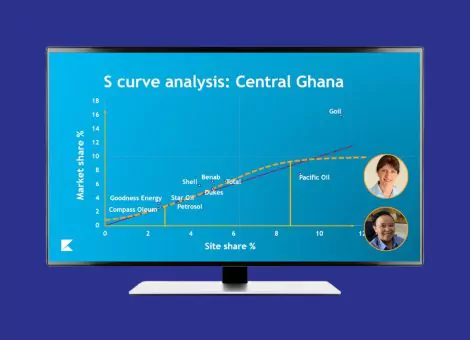How to determine your main fuel competitors at a micro-and-macro level?
Competitor identification is a critical process for businesses to remain competitive in today’s market. However, the traditional approach to identifying competitors has been limited to a combination of subjective opinions, desktop research, and basic Excel analysis.
This approach may have worked in the past, but in today’s data-driven environment, businesses need a more sophisticated and data-driven approach to competitor identification to deliver a competitive edge.
Historically, competitor identification has been regarded as both an art and a science. The reliance on subject matter experts, typically area managers, and their views have been integrated with desktop research and some good old-fashioned gut feeling for many years. However, this approach is inefficient and can result in significant missed opportunities.
A holistic, data-driven approach
Sometimes your overall strategic position ends up taking precedence over local market peculiarities. Your traditional strategy may look something like this – “my main competitor at a national level is Brand X, so I will price Site 123 against its Brand X competitor”. However, this approach isn’t very efficient. The competitor site may be small and not very relevant within the micro-market of your individual site.
By following this model, you may be allowing your site to drop very quickly when you would be better off waiting (or vice versa – you may be holding prices because your main competitor is slow to move, and the other competitor you are ignoring takes your volume).
The most effective approach to competitor identification still requires businesses to do their desktop research and ask their local experts. But they must also take the time to look at the data and understand the story that the data tells, for a holistic and data-driven strategy.
A one-size-fits-all approach does not work in today’s market and likely never did. Regional, city or even intra-city-level strategies are likely needed in your markets.
Competitors at a macro and micro level
To determine competitors at a micro and macro level, businesses must understand their traffic patterns, price sensitivities, day-to-day volume performance, and who their customers are, as well as who their competitors’ customers are. The key to these insights is data.
At a micro-level, businesses must first identify their direct competitors. These are businesses that offer similar products or services and are in the same area. To identify direct competitors, smaller businesses can use various data sources, including Google Maps, business directories, and local search engines.
Identifying and mapping competitors using low-tech approaches (such as Google Maps and local directories) is likely still effective and efficient enough for a small organization. As your team grows and the number of sites under management also grows, however, doing things the traditional way becomes a risk, if not a liability.
Finding competitors one by one on Google Maps is okay for a network of, for example, 50 sites, but it quickly becomes unmanageable (and extremely time-consuming) for a network of 500! Pricing leaders need to be aware of this as they scale their teams and their operations.
For a larger or fast-growing business, it’s important to have a GIS platform like Kalibrate Competitive Insights, as using search engines can quickly become ineffective and extremely time-consuming when you have a large network.
Then, businesses must analyze their pricing strategy, product offerings, marketing activities, and customer reviews. This analysis will help businesses understand their competitors’ strengths and weaknesses and their customer’s needs and preferences.
At a macro level, businesses must identify their indirect competitors. These are businesses that offer substitute products or services to theirs and are located outside their immediate area, such as public transportation. With this information, businesses must then analyze their pricing strategy, product offerings, marketing activities, and customer reviews. This analysis will help businesses understand their indirect competitors’ strengths and weaknesses and their customers’ needs and preferences.
From data to insights
The data is out there, but as we said in our previous blog, it isn’t the only part of the equation. Businesses need two things to be successful: access to the right, reliable, and frequent data and access to the tools and guidance to dig deep into the numbers and spot the trends.
Effective competitor identification can have a significant impact on a business’s profitability. By understanding who their competitors are and what is working well for them in a specific market, companies can adjust their pricing strategy, product offerings, and marketing activities to remain competitive and attract more competition.
Read more articles about:
Fuel pricingSubscribe and get the latest updates
You may unsubscribe from our mailing list at any time. To understand how and why we process your data, please see our Privacy & Cookies Policy
Related Posts
Fuel pricing
Fuel pricing by exception: When do analysts actually analyze?
Managing fuel prices can be time-consuming, especially when analysts spend much of their day on routine tasks....

Fuel pricing
Middle East / Africa - Fuel network planning: Critical insights
Join our team as we look at the key points of insight that fuel network planners need to consider when making...


